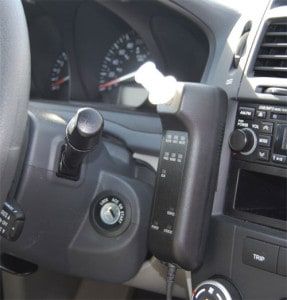 Studies have shown that ignition interlocks successfully reduce re-arrest rates among drunk drivers and drunk driving-related deaths. The Centers for Disease Control and Prevention (CDC) reports that interlock installation reduces re-arrest rates by 67%. According to the National Highway Traffic Safety Administration (NHTSA), Arizona, Oregon, New Mexico, and other states that require interlocks for all convicted drunk drivers have seen a 30% or more decrease in drunk driving-related fatalities.
Studies have shown that ignition interlocks successfully reduce re-arrest rates among drunk drivers and drunk driving-related deaths. The Centers for Disease Control and Prevention (CDC) reports that interlock installation reduces re-arrest rates by 67%. According to the National Highway Traffic Safety Administration (NHTSA), Arizona, Oregon, New Mexico, and other states that require interlocks for all convicted drunk drivers have seen a 30% or more decrease in drunk driving-related fatalities.
Despite the proven effectiveness of ignition interlocks, many people remain skeptical about the device’s effectiveness and safety. With so many ways to get around giving a breath test, such as having someone else do it, and running retests, it’s easy to understand such concerns. To ease those concerns, let’s take a look at a few ignition interlock myths.
- Interlocks are unreliable. To ensure reliability, all interlocks must meet standards set by the NHTSA. That is, an interlock must prevent a car from starting 90% of the time if the driver’s blood alcohol content (BAC) is at least 0.01 higher than the preset limit. Independent laboratories test interlock companies’ devices to make sure requirements are met before being approved by the NHTSA.
- Running retests make interlocks dangerous. While it’s true that interlocks will signal drivers for a retest while the car is in motion to ensure someone else did not blow into the device or to detect an increasing BAC, providing a running retest is not dangerous. The interlock is designed to give drivers enough time to pullover to perform the retest. Manufacturers recommend that drivers do not perform the test while the car is in motion to ensure safety.
- Failing a running retest is dangerous. The only danger associated with failing a running retest is that the driver is driving while impaired. Because the interlock is hooked up to the vehicle’s start system, not the engine, the car will not stop if a driver fails a retest. Rather, the vehicle’s horn will honk and/or the lights will flash to alert law enforcement.
- Interlocks are expensive. While interlock installation can cost from $70 to $250 and monthly maintenance fees can run from $60 to $90, interlocks cost much less than imprisonment, electronic monitoring, and public transportation, according to the NHTSA. Some states even have a fund set up for offenders who are ordered to install the device but cannot afford it.
- Interlocks are inconvenient for shared vehicles. Family members who share a vehicle with a driver ordered to install the device can still drive the vehicle. They simply must blow into the device to start the car.
- Mouthwash will cause a driver to fail a test. Yes, if a driver blows into the interlock immediately after using alcohol-based mouthwash, the device might detect the alcohol and prevent your car from starting. However, drivers can prevent failure simply by rinsing their mouths out with water and waiting a few minutes before blowing into the device. Interlock users can also use alcohol-free mouthwash.
- Asthma or another health issue can prevent a driver from using an interlock. Interlocks are designed to allow even those who can’t take very deep breaths to breathe into the device comfortably. However, if such drivers show that they cannot use the device as is, the settings can be adjusted to accommodate those with breathing issues.
- Interlocks violate constitutional rights. Driving is a privilege, not a right. When someone commits a DUI offense, they lose that privilege. Interlocks allow convicted drunk drivers to safely and legally regain that privilege.
